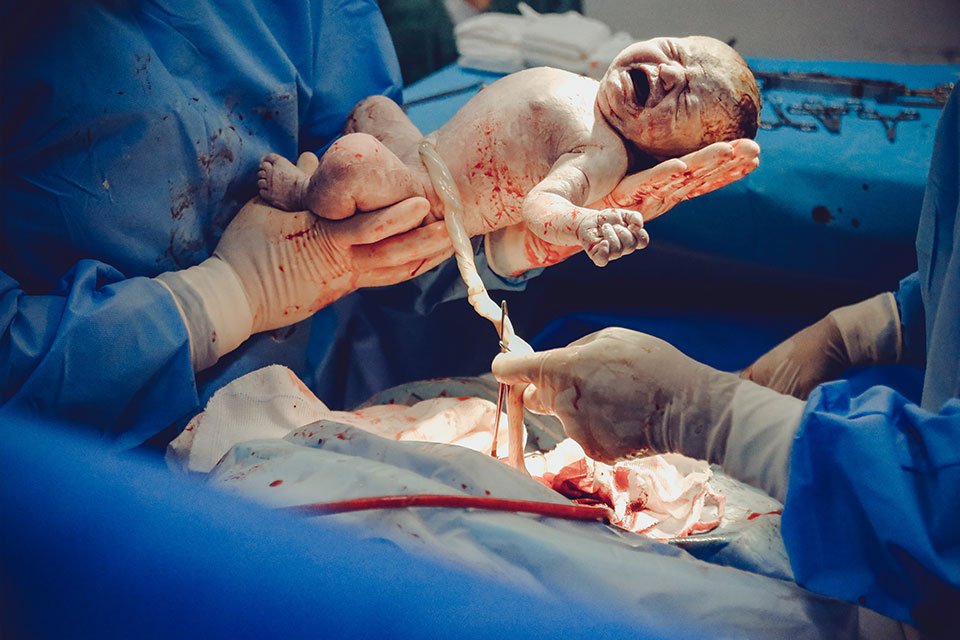
Unsurprisingly, receiving the news of expecting a baby is exciting for all parents. And why shouldn’t it be? A baby brings lots of happiness and joy to the family. That is why, as soon as parents hear this fantastic news from the doctor, they start praying and planning. Of course, every parent’s first step to welcoming their sweet bundle of joy into this world is by seeking the right medical help. Even though the latest technologies and medical practices have made the childbirth process much easier and smoother today still, unfortunately, medical malpractice is not uncommon and can happen to anyone. As a result, birth injuries occur. Each year, roughly 6 in every 1,000 babies suffer from birth injuries in the United States.
In medical terms, birth injury is any harm or damage to the newborn before, during, or after the delivery. The causes of birth injuries are diverse and tricky. However, it is to note that not all birth injuries have severe consequences. Some are temporary and go away on their own. And while the healthcare industry is making progress in minimizing the number of medical malpractice during childbirth, learning the impacts of birth injuries can help you navigate unexpected and challenging hurdles. Thus, read on below the short and long-term impact of birth injuries:
Table of Contents
POTENTIAL LONG TERM IMPACT OF BIRTH INJURIES
A few birth injuries can result in lifelong consequences. Some of the common long-term impacts include:
1. CEREBRAL PALSY
Cerebral palsy can occur due to various reasons—for example, lack of oxygen, untreated jaundice, abnormal brain development, etc. Since there is no cure for this birth injury, the child has to go to therapies throughout their life. In addition, it can lead to financial and emotional stress for parents. Therefore, if your child has sustained cerebral palsy, consider getting in touch with Birth Injury Jusice Center so you can hold the healthcare staff accountable for negligence. In addition, experienced lawyers can help you get the rightful money you deserve. Typical symptoms of cerebral palsy include lack of muscle balance, tremors, drooling, etc.
2. BRACHIAL PLEXUS INJURY
Another birth injury that leads to long-term impact in terms of permanent disability is brachial plexus injury. Usually, the injury occurs when there is damage to the group of nerves controlling arms, hands, or shoulders. Although most times the baby can recover from this injury, in some unfortunate incidents, infants have to live with severe symptoms throughout their lives. The injury happens in the newborn when the health practitioner performing delivery forcibly pulls the hand or shoulder of the baby while the head is still in the birth canal. Numbness, burning, sensation, and weakness are common mild or moderate injury symptoms. However, if the injury is severe, the child may have complete paralysis in one or more muscles in the injured area.
POTENTIAL SHORT TERM IMPACT OF BIRTH INJURIES
Certain injuries cause a short-term impact on a newborn’s life. Below are the two most common types:
1. CEPHALOHEMATOMA
It is a type of birth injury in which a pool of blood accumulates in the baby’s scalp. Cephalohematoma usually occurs when medical practitioners put pressure on the baby’s head during the delivery process, causing ruptures to the blood vessels. Due to this, blood vessels cause internal bleeding. Since the blood accumulates outside the skull, causing a soft bump to appear on the newborn’s head, parents may feel panic, which is pretty normal. However, this condition is not hazardous to the baby’s health. Only about 1% or 2% of babies suffer from this birth injury. The good news is that this injury goes away within weeks or months on its own. Typical symptoms associated with this injury include infant jaundice, infection, or anemia.
2. CAPUT SUCCEDANEUM
Like cephalohematoma, caput succedaneum occurs due to the pressure on the infant’s head during delivery. Due to this, the scalp or the portion of the scalp swells during labor. Usually, the employ of forceps or vacuum extractors can cause this injury. Other risk factors of this birth injury include c-section, false labor, and insufficient amniotic fluid. The symptoms for caput succedaneum include puffiness, bruising, or swelling in the affected area. In some instances, there is also color alteration. The injury heals within a few days on its own. But, in rare cases, the pediatrician might need to remove fluid to reduce the swelling in the scalp.
3. IMPACT ON THE ENTIRE FAMILY
Let’s face it, raising a normal and healthy child is itself a tough job for many parents. However, raising a child that has sustained a birth injury is even more challenging. After all, bringing up a child with severe physical impairment requires a lot of time, physical effort, and financial burden. In addition, at times, siblings might feel abandoned or confused since parents have to give more attention and time to birth injured child. All in all, these challenges can significantly impact the entire family, such as causing stress, burnout, depression, etc.
CONCLUSION
Undeniably, the revelation of birth injury in any newborn leaves the parent and the siblings devastated. If an unfortunate incident has occurred with your baby, allow yourself to grieve. After all, grief is a part of a healthy coping mechanism. However, don’t just sit back and grieve. Instead, take charge of your child’s care and help them live a meaningful life. For this, consider getting the proper treatment and therapy for your child. You can also consult a medical malpractice lawyer to help you relieve the financial stress and get the lawful compensation your baby deserves.





